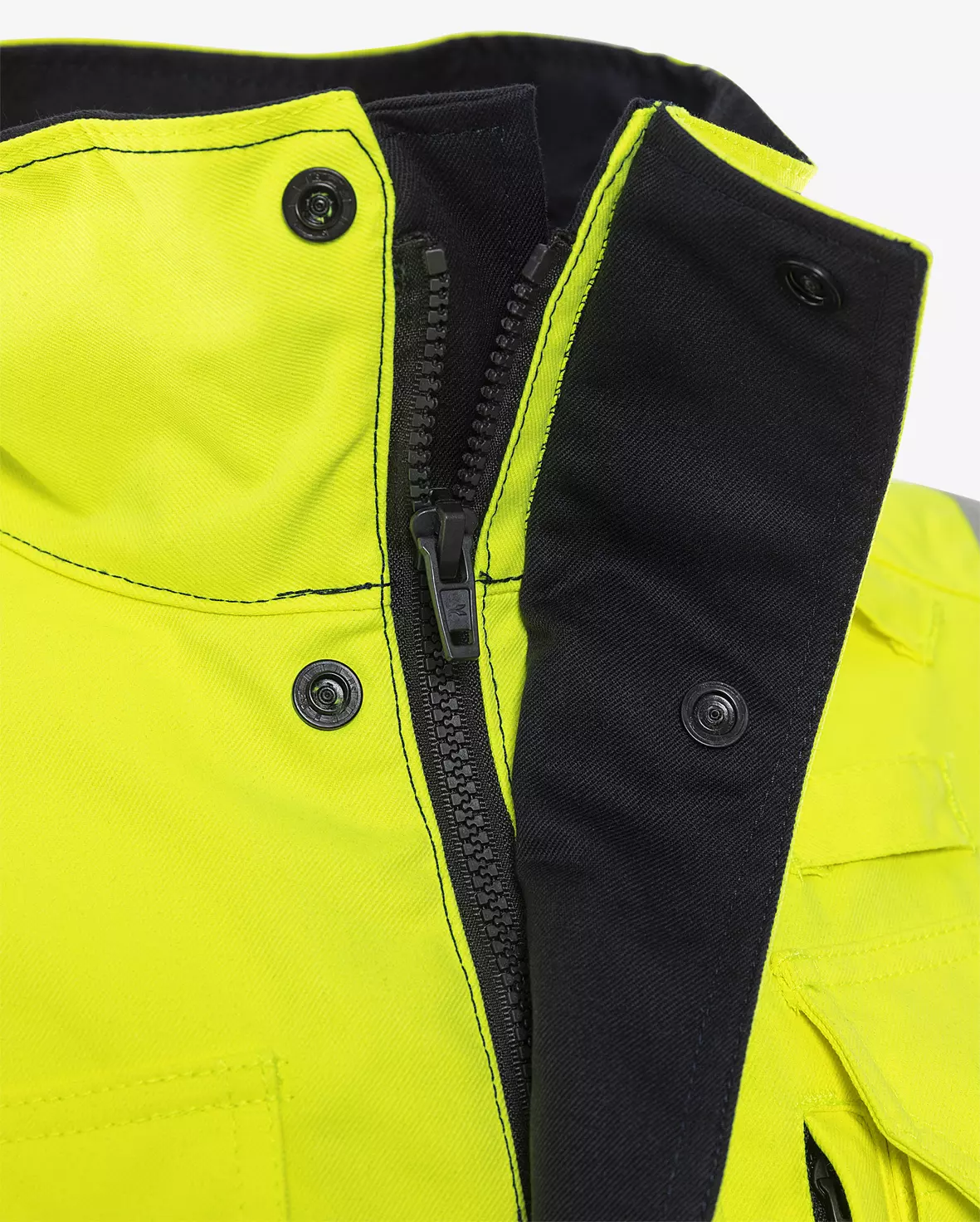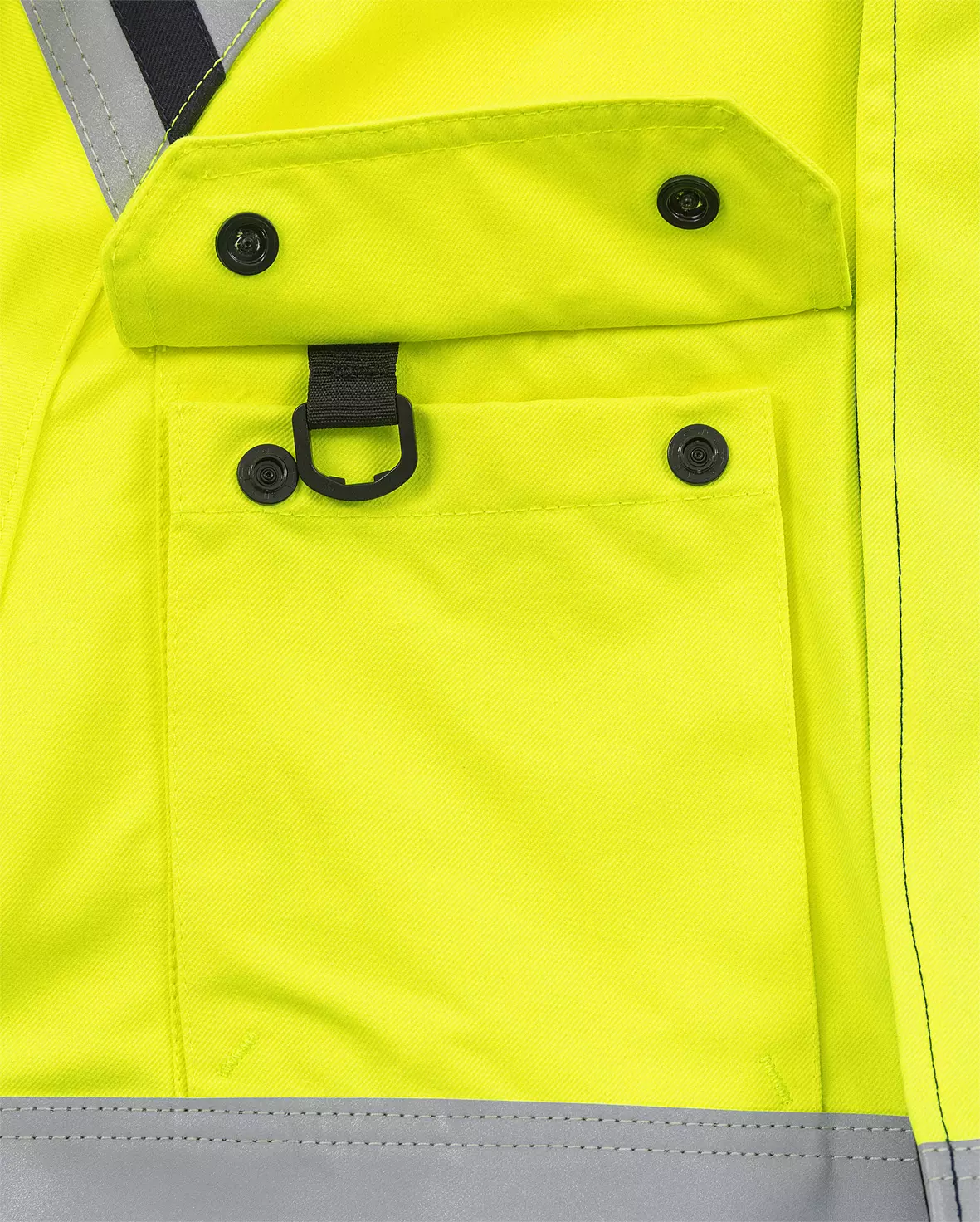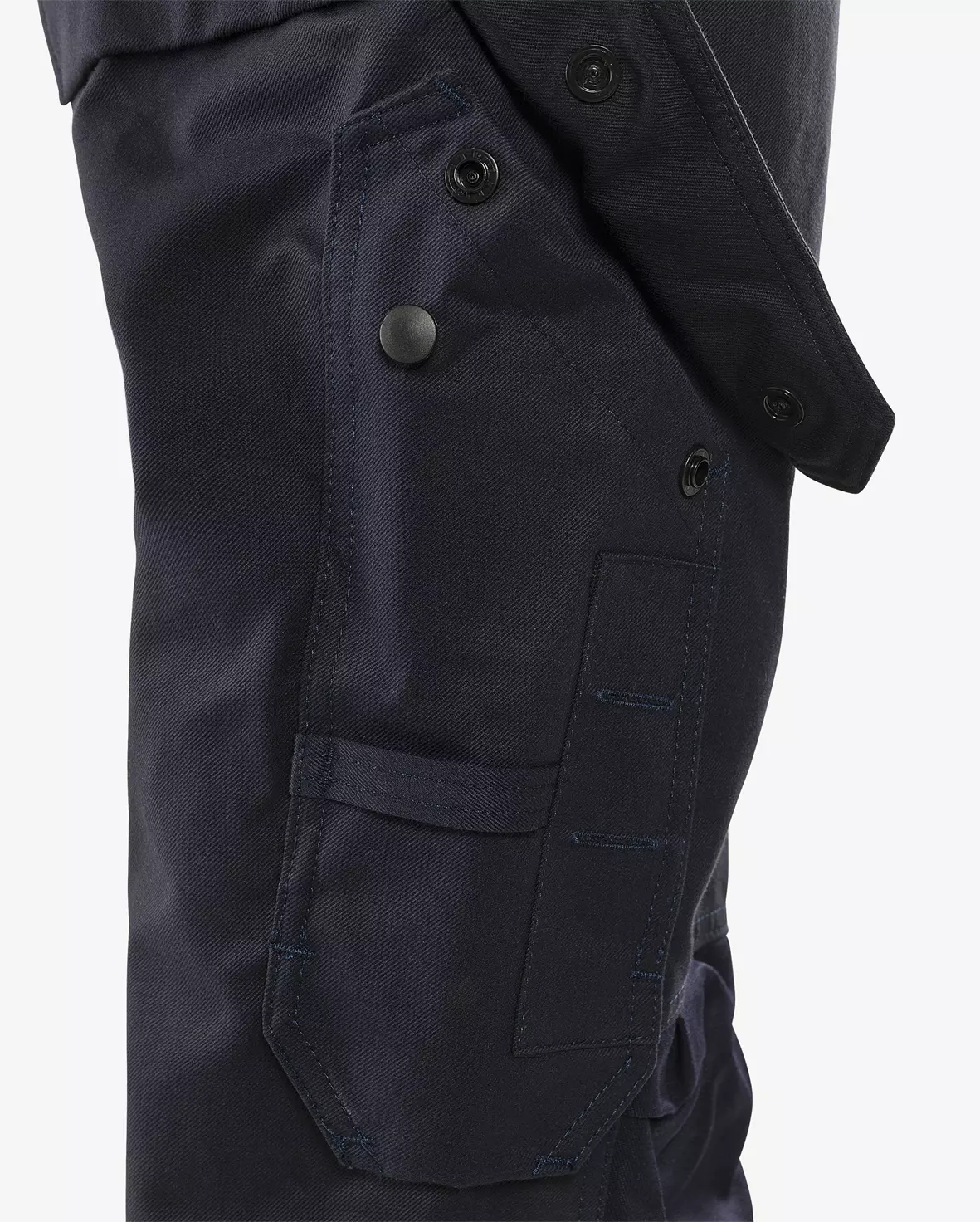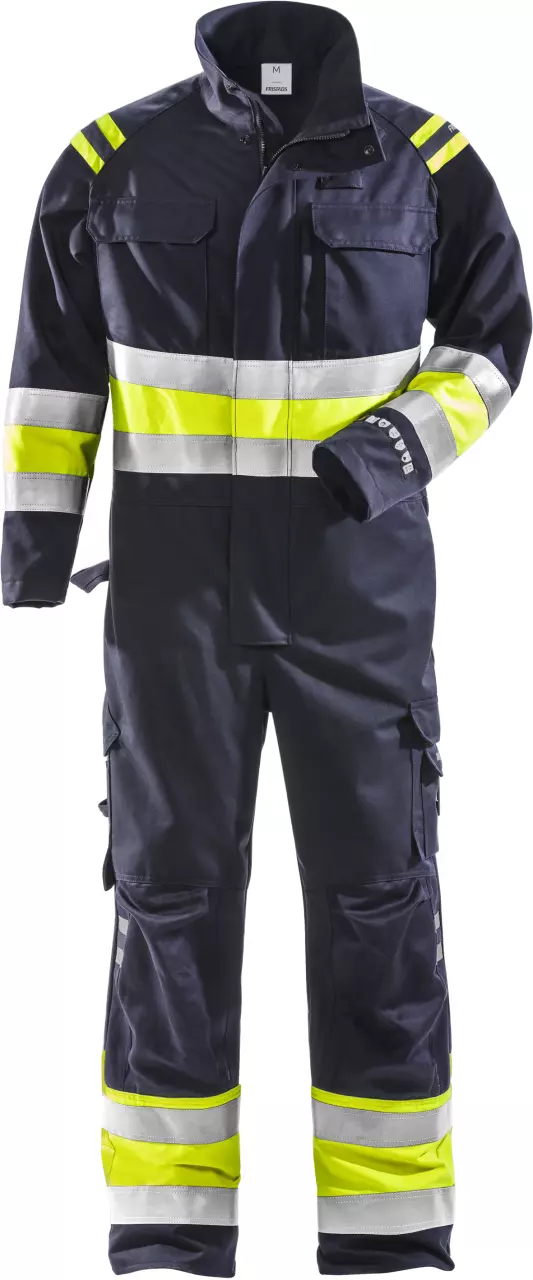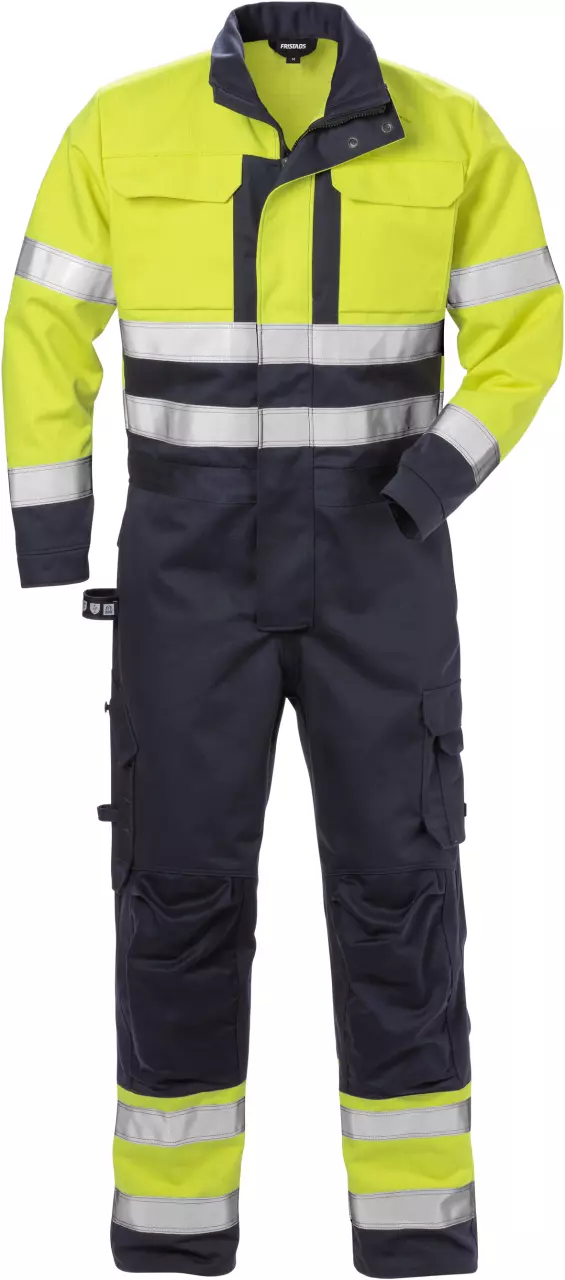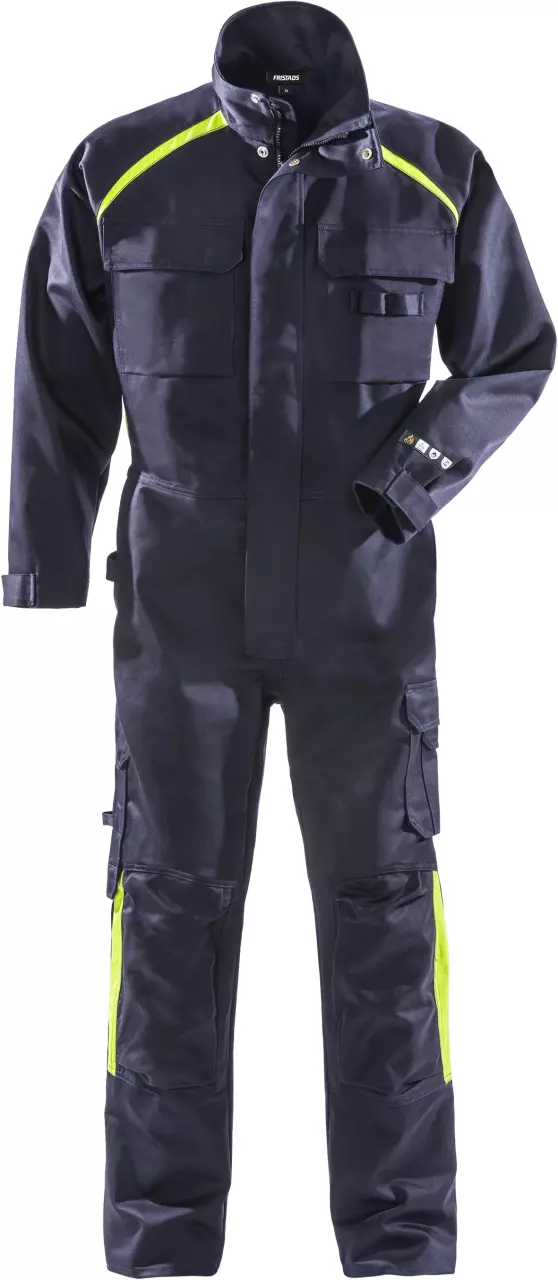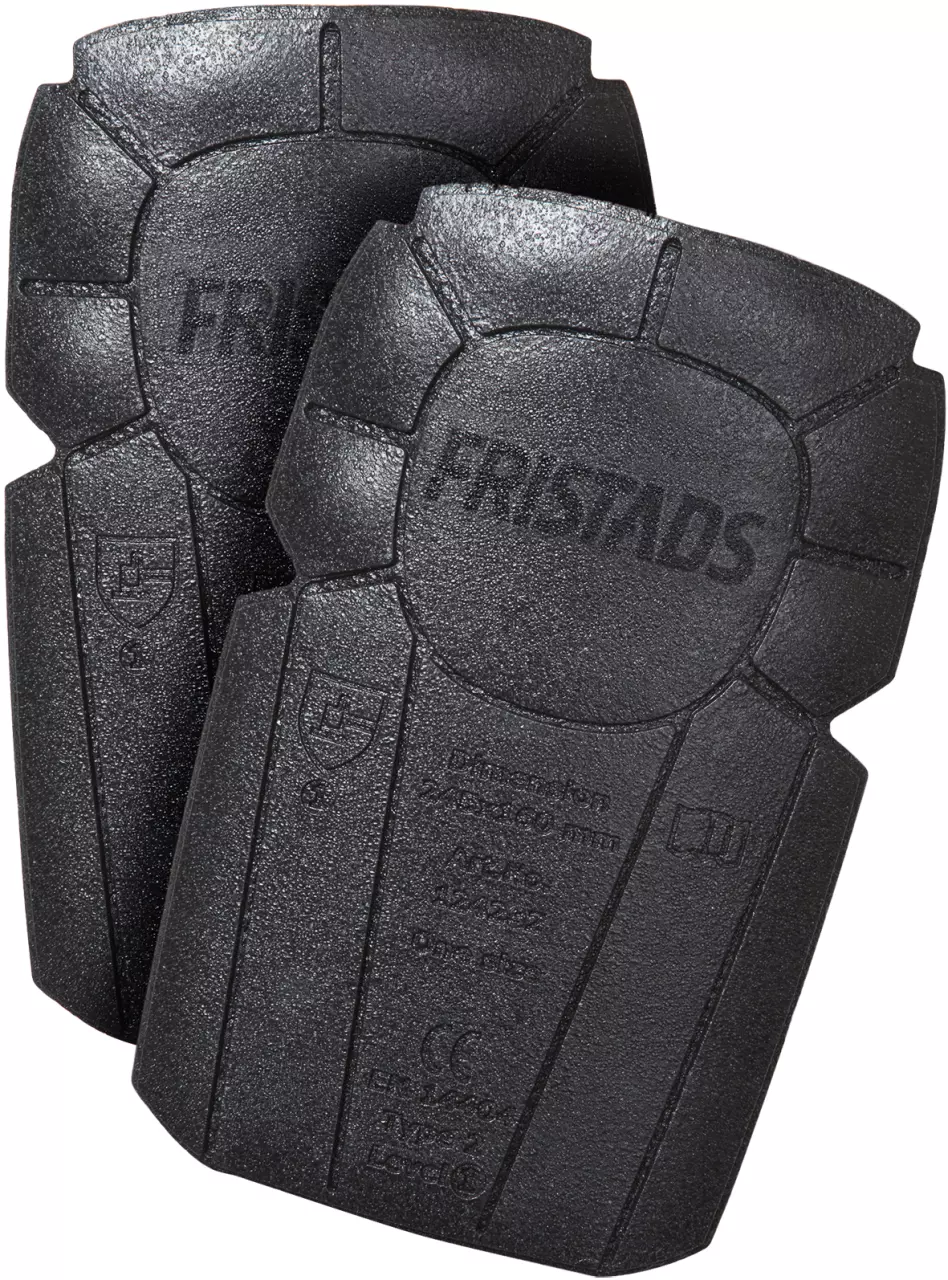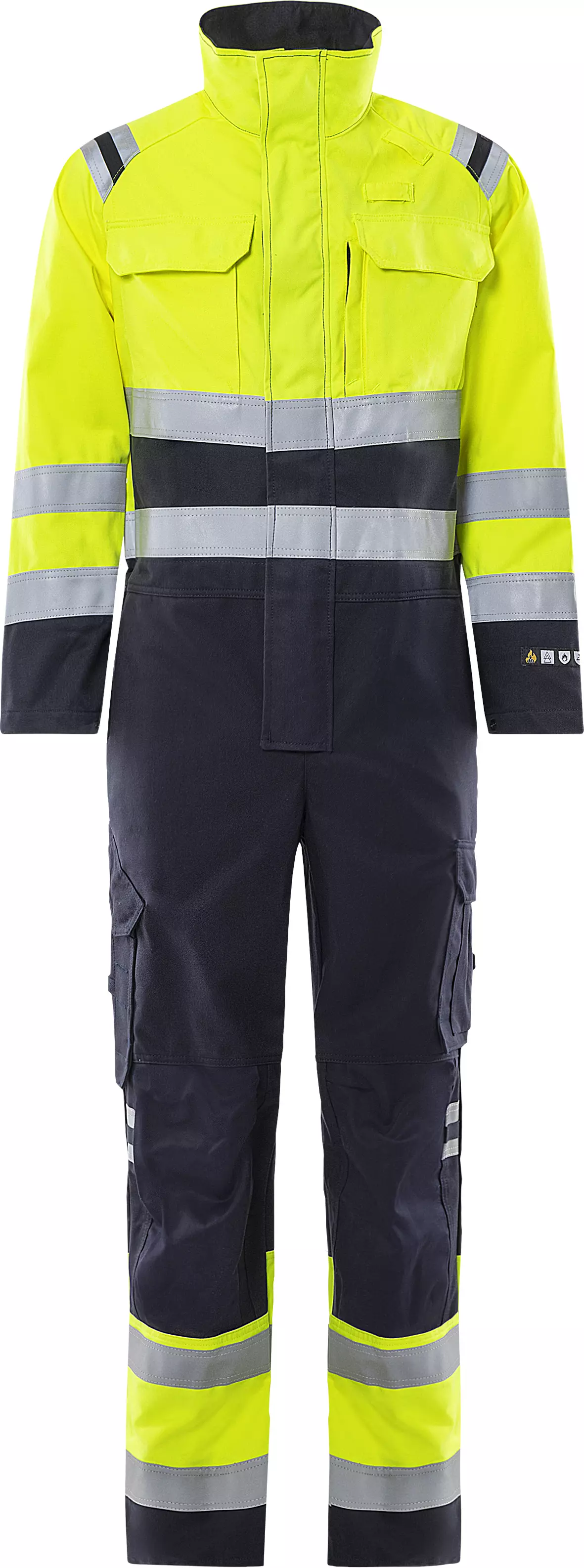
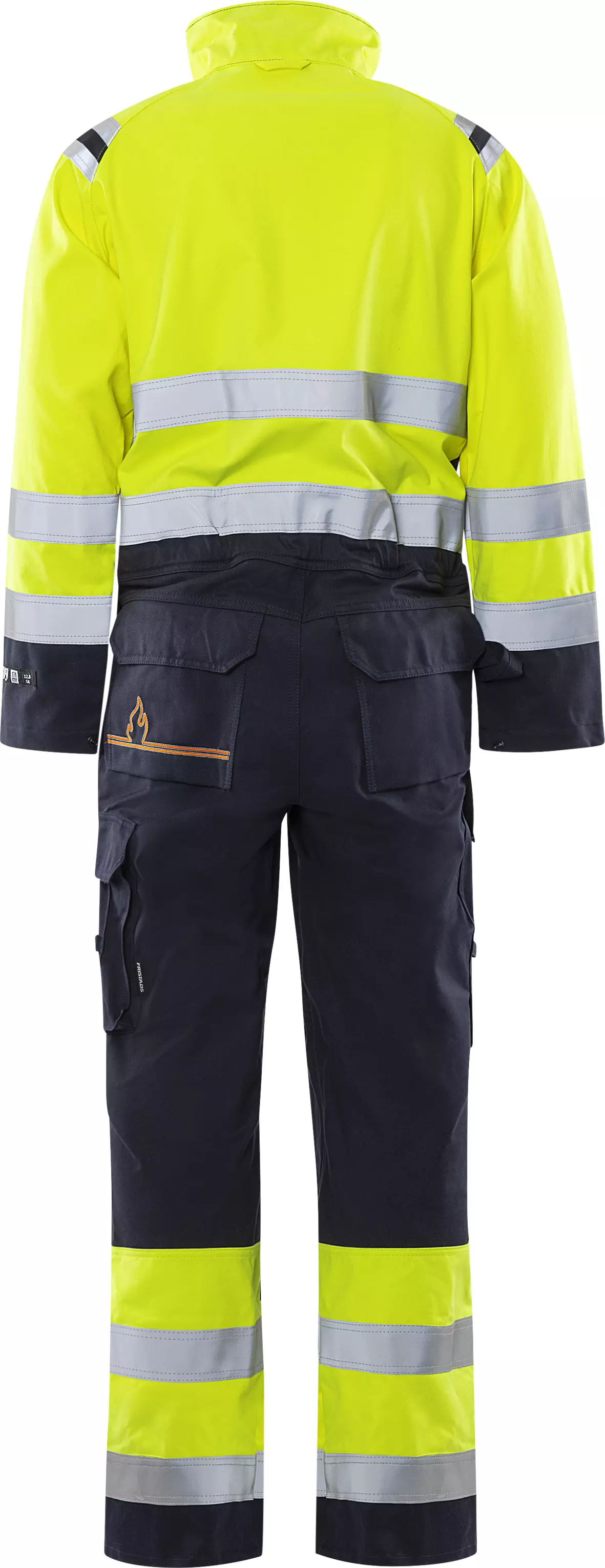

Features You'll Love
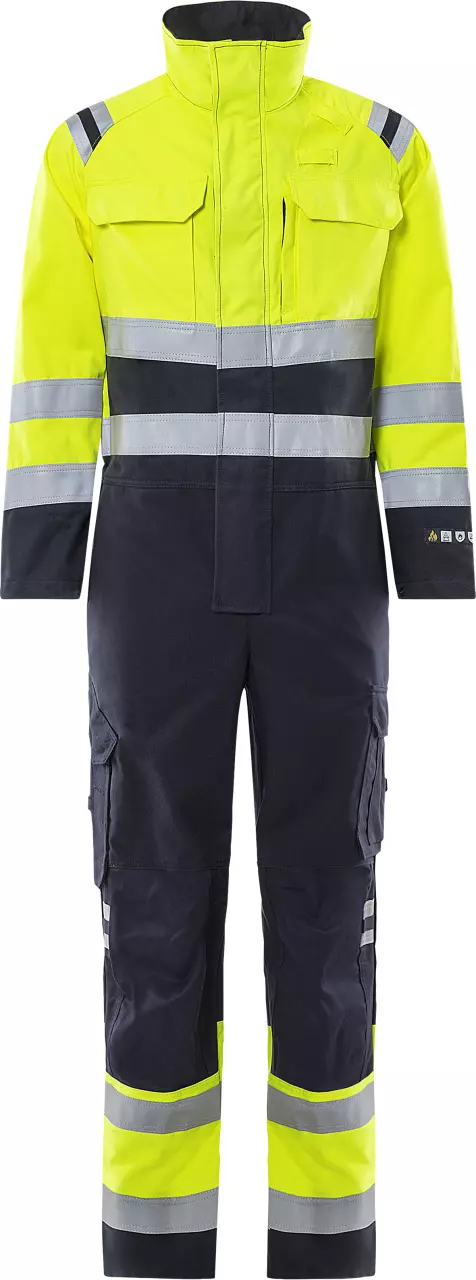
Fit · Regular
Determines how closely the overalls follow your body shape, affecting comfort, range of motion, and ability to layer clothing underneath.
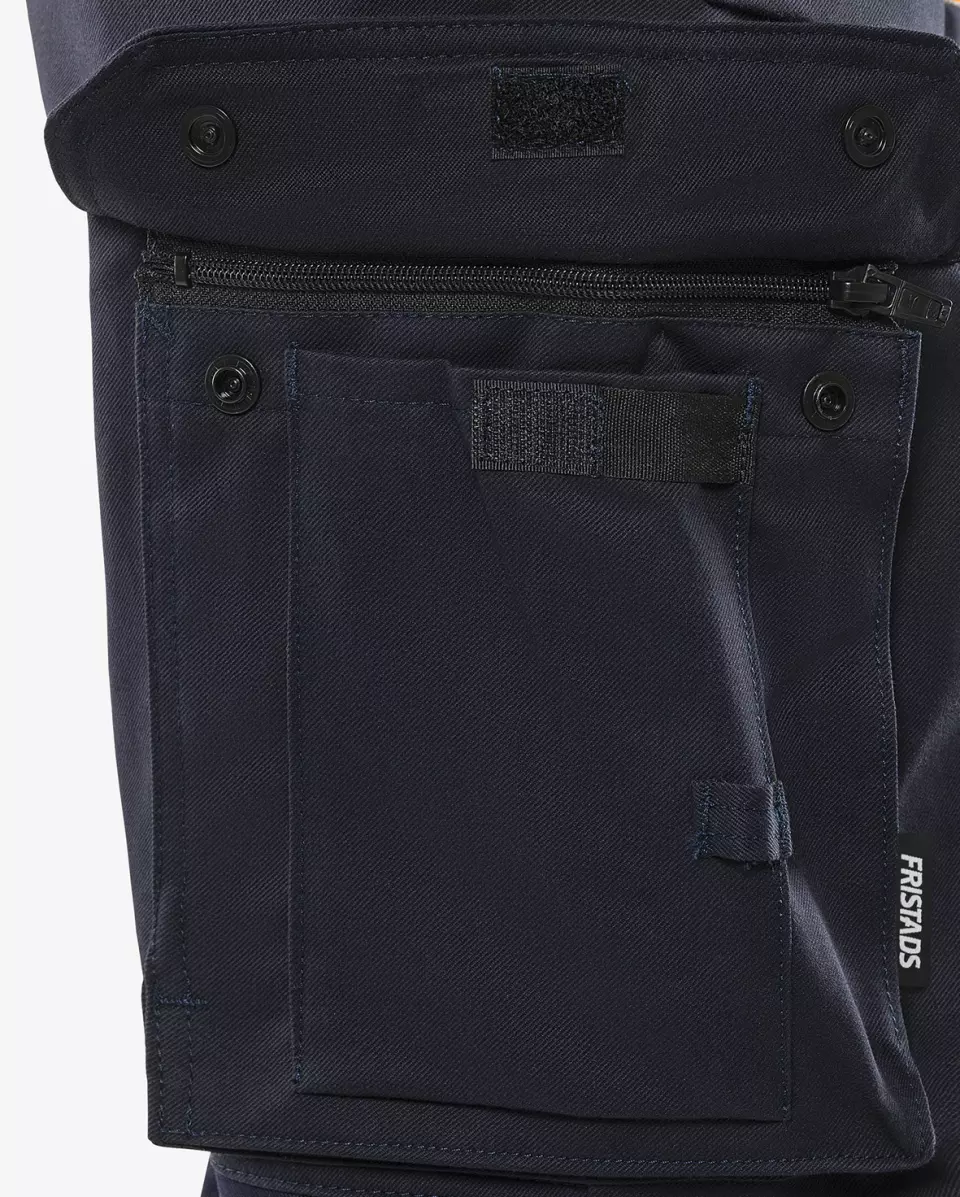
Pocket System · Zipper Pocket
Zippered pockets securely hold your essentials, preventing loss and giving you peace of mind on the job.

EN 1149-5 · Material Performance Tested
This garment's material is tested to reduce static electricity buildup. It helps prevent sparks that could cause a fire or explosion in certain work environments, keeping you safer around flammable materials or sensitive electronics.

EN ISO 20471 · Reflective Strip Area Grade 2
Provides an intermediate level of visibility for use in moderate-risk environments. This makes you more visible day and night to traffic moving at speeds up to 60 km/h, ideal for road work or delivery drivers.
Fristads
Flamestat High Vis Coverall Class 3 8175 ATHS
Flamestat High Vis Coverall Class 3 8175 ATHS
4.5 / 5
427,61 €
Choose size
Free delivery
Features You'll Love

Fit · Regular
Determines how closely the overalls follow your body shape, affecting comfort, range of motion, and ability to layer clothing underneath.

Pocket System · Zipper Pocket
Zippered pockets securely hold your essentials, preventing loss and giving you peace of mind on the job.

EN 1149-5 · Material Performance Tested
This garment's material is tested to reduce static electricity buildup. It helps prevent sparks that could cause a fire or explosion in certain work environments, keeping you safer around flammable materials or sensitive electronics.

EN ISO 20471 · Reflective Strip Area Grade 2
Provides an intermediate level of visibility for use in moderate-risk environments. This makes you more visible day and night to traffic moving at speeds up to 60 km/h, ideal for road work or delivery drivers.
Product description
Class 3 multinorm coverall with comprehensive protection against flames, arc flash, anti-static properties and high-visibility warning protection. The coverall offers dirt-, oil- and water-repellent properties as well as CORDURA®-reinforced knee areas for increased durability. With numerous pockets and adjustable elements, it is designed for demanding industrial work environments and certified after 50 wash cycles as well as for industrial laundry.\n\nProduct Features:\n- Dirt-, oil- and water-repellent\n- Reflective details on shoulders\n- CORDURA®-reinforced knee pocket with internal opening\n- Height adjustment for knee pads in knee pocket\n- Adjustable waistband and cuffs\n\nTechnical Details:\n- Material weight: 300 g/m²\n- Body zone: Full body\n- Season: Year-round\n- Product categorization: Coverall\n- Co-brand name: CORDURA®\n\nStandards:\n- EN 61482-1-2 APC 1, EN 61482-1-1 ELIM: 9 cal/cm²\n- EN ISO 11612 A1 A2 B1 C1 E2 F1\n- EN ISO 11611 A1 A2 Class 1\n- EN 1149-5\n- EN 13034 Type PB [6]\n- EN ISO 20471 Class 2 in size XS and Class 3 in sizes S-3XL\n- EN 14404 together with knee pads 124292\n- Certified after 50 wash cycles\n- industrial laundry tested according to ISO 15797\n- OEKO-TEX® certified

